
YEAR/MODEL: 2002 Honda ST1100
OWNER: Clement Salvadori
HOMETOWN: Atascadero, California
Back in the late 1980s, the European market was as important to Honda as the American one. And motorcycles were popular, as cars and car insurance were more expensive than they were here. The demand was quite different, with Yanks liking big cruisers and narrowly focused sporting machines, while those east of the Atlantic had more of a practical approach, favoring motorcycles that could be used to commute on workdays, and then go two-up on a vacation.
Each motorcycle company is constantly looking around to see what the competition is doing. The Japanese Big Four undoubtedly have their own domestic spying networks, trying to keep track of each other’s doings, but there are also the local manufacturers. In the U.S., the only indigenous competition was from Harley-Davidson, but in Europe numerous homegrown marques were taking their share of the market.

In the late 1980s, BMW, with its new four-cylinder K-bikes, was doing quite well in the touring market. The head of Honda Germany decided he wanted a piece of that action and got permission from Japan to design his own bike, a sport-touring model, with emphasis on touring but still agile.
Hence the ST1100, introduced in Europe in 1990 as the Pan-European, with a wind-protecting fairing, removable saddlebags, and shaft drive. Ride to work in the rain, load the bags for a trip, and never have to worry about cleaning and adjusting a chain. This was an all-new machine, with a longitudinal (meaning the crankshaft was at a right angle to the axles) V-4 engine, putting out close to 100 rear-wheel horses.
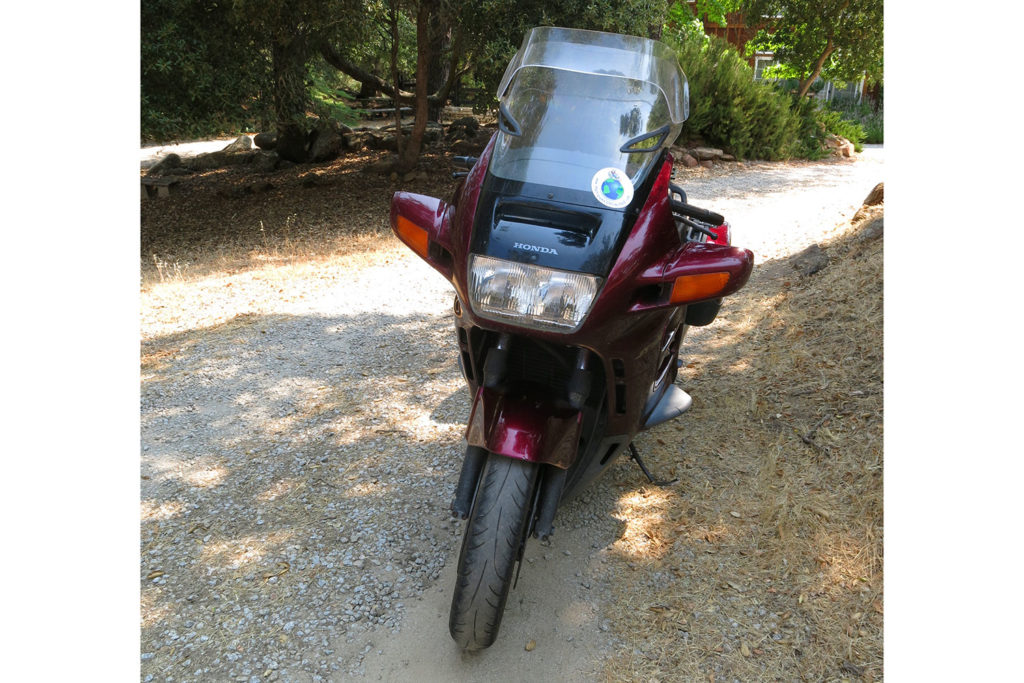
This was no lightweight, as the ST weighed about 700 pounds with the huge 7.4-gallon gas tank filled. But the blessing was that the tank was beneath the seat, keeping the weight down low, which is where many sensible touring riders like to have it. That required a fuel pump pushing the gas up to the four 34.5mm Keihins – carburetors in the coming age of fuel injection. No matter, as the carbs did an excellent and trouble-free job of keeping the engine spinning. A choke lever on the handlebar was a reminder of the carburetors.
The liquid-cooled V-4, with a bore of 73mm and a stroke of 64.8mm, had a total capacity of 1,084cc. It used double overhead camshafts, with a single timing belt running all four camshafts and four valves per cylinder. Valve adjustment was by shims, not always appreciated by home mechanics, but service intervals were set at a fairly lengthy 16,000 miles. Ignition was transistorized, with electronic advance. And the oversquare engine pulled strong all the way from 2,000 to the 8,000-rpm redline.
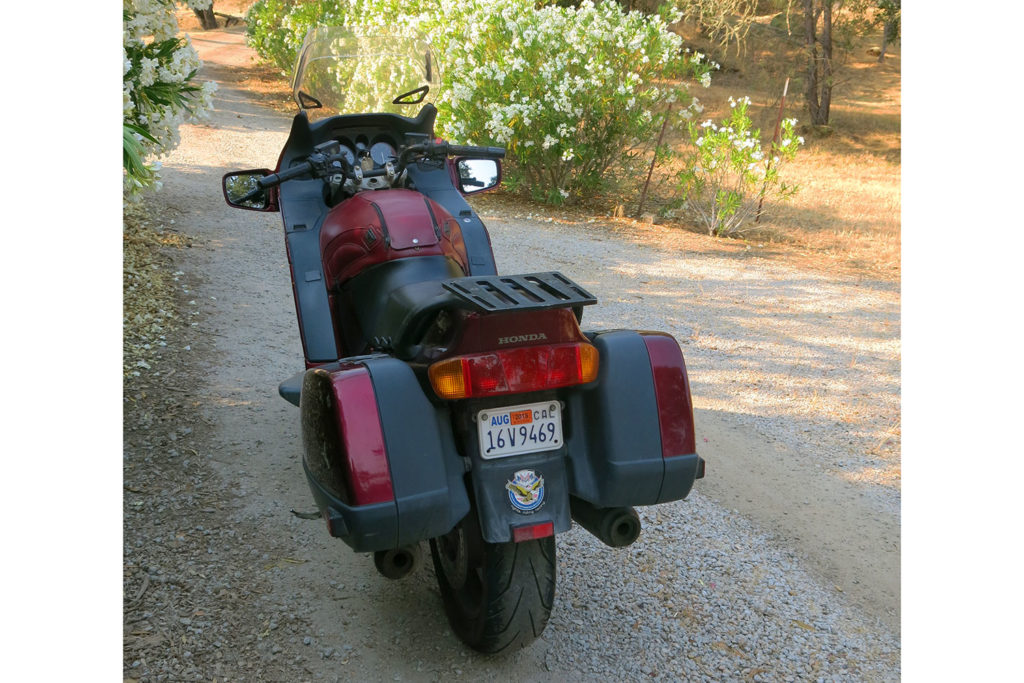
Down in the bowels of the wet-sump engine, everything was built to last, with almost four quarts of oil capacity and a cooler up front. It sat in a full-cradle steel frame (contributing to the bike’s hefty weight), which gave confidence to the rider when leaning hard into the curves at considerable speeds. Up front was a 41mm Showa cartridge fork, with Honda’s TRAC anti-dive mechanism and allowing nearly 6 inches of travel. No adjustments here. At the back, a single Showa shock, with adjustability for rebound damping and spring preload, offered nearly 5 inches of travel.
The longitudinal power ran back through a wet clutch and a cassette-style 5-speed transmission to the driveshaft. Aluminum three-spoke wheels used an 18-inch 110/80 tire on the front, a 160/70 17-incher on the back, with a shade over 61 inches between the axle centers.
The Europeans loved it – perhaps for no better reason than it was a good alternative to the BMWs, along with a bit more power. The American market got to see this bike a year or so after it was released east of the Atlantic. Several improvements were made after that first version, including raising the alternator output from 28 to 40 amps and offering a combined ABS and traction control system. The initial ABS, running from 1992 to ’95, had separate systems on the front and rear wheels, but an upgrade for ’96 used linked brakes. A mild upgrade of the windscreen arrived for the 1995 model year.
Most important for a motorcycle of this design is comfort. On this ’02 model, which belongs to yours truly, a Laminar Lip was added to the top of the windscreen to smooth airflow around my helmet, since I’m taller than average. A nice addition is over to the left of the instruments, where a hand-turned knob can alter the angle of the dual halogen lights; very simple, very useful. Fitting a tankbag on the plastic cover over the engine was simplified by a company called Bagster that makes Naugahyde covers for over 200 motorcycle models, to which a bag can be neatly clipped. That bag has logged a lot of miles, as I had it on my ’92 model, which was sold after 93,000 miles, and then on my then-new ’02 ST1100, which has 103,000 miles and counting.
The flattish saddle is comfortable for long two-up days, or even longer solo days, allowing the rider to move back and forth. The saddlebags are locked onto the bike, but they can be removed with only minor fuss. However, it is far more useful to have liners in the bags; just open the bags, take out the liners, and you are on your way.
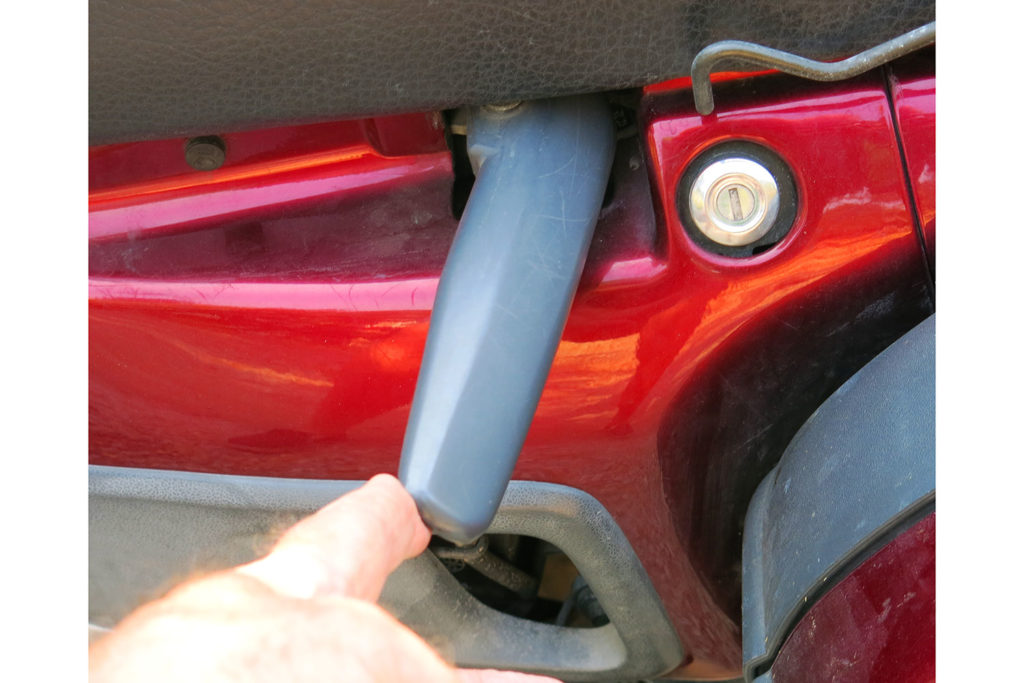
A convenient frill on the ST is the handle under the left side of the saddle, which folds against the bike until pulled out 90 degrees to be very useful when lifting the bike onto the centerstand. Another much appreciated addition is the concealed crash bars on the fairing, allowing for a slow fall without doing any damage.
Big smiles could be seen at Honda Germany after the ST1100 appeared. They had given the competition a good kick in the old wazoo, with the ST soon winning all sorts of awards. And it was pretty much left unchanged for the next dozen years until the ST1300 debuted in 2003.
Throw a leg over that saddle, turn the key, push the button, clutch in, click into first, and the sheer, silent rush of power is exhilarating. And 500 miles with one fuel stop in between is always a temptation.

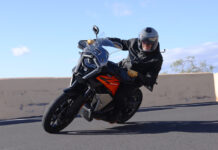

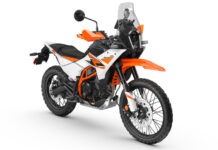
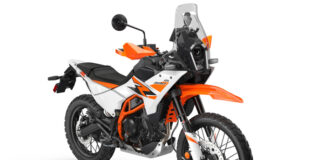
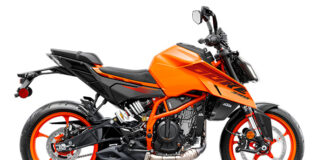


Love to see articles by Clem. The ’90’s to 00’s were/are my favorite bikes, and it’s great to see them still ridden, written about, and appreciated.
FWIW, there’s a type early on about the engine – it should read longitudinally-mounted rather that transverse-mounted. It is corrected later on in the article.
Fred, the crankshaft is transverse and the driveshaft is longitudinal.
Rider Magazine, the crankshaft on the ST1100 (and the ST1300) runs front-to-back, not side-to-side. Front-to-back is longitudinal. Side-to-side is transverse.
I’m quite certain Clem knows this, so it must be one of your editors that messed it up.
Clem wrote “transverse-mounted (meaning the crankshaft was at a right angle to the axles),” but a transverse-mounted crankshaft typically runs side-to-side, or parallel to the axles. The parenthetical reference is corrected, but it the text should read “longitudinal (meaning the crankshaft was at a right angle to the axles).” We’ve made the correction, and we apologize for the confusion.
Oops, Clem used the term “transverse” to refer to the crankshaft orientation, but he meant “longitudinal.” Both the crankshaft and driveshaft on the ST1100 are parallel. Apologies for the confusion.
You are spot on as Honda always described in their own lititure that this V-4 variant as “longitudinally” . The V-4 Magna/Sabre & Interceptor V-4s where designated as being transverse just like the CB750. Classifying this jewel of a motor as being longitudinally mounted conjured up images of an American V-8 and also played into the long haul description.
so, who is correct? I think Fred is…..because;
My 1998 ST had valve covers on both sides of the engine, which would indicate a longitudinal (paragraph 6, first sentence) crankshaft that is 90 degrees to the axles, not parallel to them.
My pal Clem. His storied experience is always appreciated. I have an ’05 ST-1300 with 86,000 miles. In moving from the ST-1100 to the ST-1300, Honda did a funny thing. They increased the displacement and (needlessly) dropped the gear ratio). I don’t know why. In 15 years of ownership, I may have used full throttle a half dozen times, and then only for a few seconds. The acceleration is too scary!
Retrospective has always been one of my favorite writings by Clem. Always a pleasant trip down memory lane as I’ve owned, or lusted after many of the bikes of which he has written. Here’s wishing you another 100,000 miles on your ST, Clem!
Yeah…a great motorcycle ! I wish Honda still made something along those lines. I owned a ’21 Goldwing DCT for about 7 months…hated that bike, and longed for something far less heavy and clunky. So, here’s hoping Honda can come through with something lighter in weight and more refined. I opted for a BMW r1200RT for the time being, since Honda really didn’t have anything to slot in that size-weight range for touring.
I remember when Clem bought the second ST1100 (no better replacement at the time). I had a ’98 and loved it. I didn’t care for the ST1300 so I kept the ST1100 for 150k miles. Eats tires 🙂
Well written as always. Surely miss the retrospective at the end of the magazine.
Ditto on “Retrospective”. From time-to-to I do my own retrospective and reread Clem’s articles. A classic man reporting on classic bikes; what could be better!
Clem,
Still riding my 1999 ST1100. Can’t find a new bike that I like better. Ride safe.
I have a riding buddy who has about 150,00 mi on his and it is still his daily rider. He recently had issues with the “third member ” which drives the rear wheel. He found a used one on line and installed it . Seems to be working ! i as well have missed Clem’s articles. May we have more. ?
I went pretty much the same route as Clem, with a ’91 ST, then a ’97 ST, in order to gain the ABS brakes, and finally a 2003 ST and it’s increase in HP. The ’97 had 148,000 miles on it when I traded up to the 2003. So, in total, I had in excess of 250,000 miles on a Honda ST when, in 2013 pushing age 70, I decided to down size to a lighter bike. Other than maintenance, my entire cost of repairs for that quarter million miles was $15 of one small casting in the cooling system that started to leak. I’m waiting for someone to tell me they can beat that.
I owned a 1998 ST1100 and a 2007 ST1300. 80,000 miles between the two and never a mechanical failure on the road. Great rider protection in the wind and rain. Not a lot of “personality”, but just a good workhorse. A real ‘mileage eater’ on long trips; 600 or 700 mile days. Wick it up out here in Colorado or Wyoming and at 110 + mph, the miles really tick off.
Quiet, smooth, FUN. Lots of smiles. Come on Honda, you can do it again…..
Nice to see you still writing Clem, I’ve always turned to your articles first over the years. I also have an ST1100. One of the 2001 variety. Purchased used some 15 years ago it resides in the back of the shop because I can’t seem to want to put it up for sale. I’m currently on an FJR1300, but every time I look at the ‘ol ST my heart goes pitter patter. Glad to know someone else out there loves them as much.
Another 4 star article by one of my favorite writers. Keep em coming Clement. Thank Sue for sharing you with us, and thank you for your service to our country.
Bob in Florida
Good to see and read Clem’s writings again. Since the ST1100 was not available in 2008, I opted for an FJR1300.
ive had both the 1100 and the 1300 and i have to say i like the 1300 more, because of 2 things, fuel injection and adjustable windsheild. both are great bikes. found an 06 with 25k last year and love it. also have others to ride.
Thank you, Clem, for the great ST-1100 retrospect! Only one minor correction. The ST-1100 was available in the U.S. in 1990. I purchased my 1991 ST-1100 new from my dealer in Ridgecrest, CA in July 1990. According to its vin number it was #243 off the assembly line in March 1990. I have been riding it ever since, but only have 103,000 miles on it. Still runs GREAT and feels great, as always. I have tried to slow down a bit, since I did turn 82 my last birthday. I believe Clem and I are about the same age.
I’m 75 years old and have an ST1100 with only 13,000 miles on it. I better get busy riding it if I expect to ever break it in!
I’m very fond of Honda’s V4s and have owned the ST11 and 13. I actually think the 11 may be the easiest bike to adjust valves on as the rubber belt drive passes through idler gears to the four cams, so the cams can be very easily unbolted, the shims changed, and the cams dropped back into place without messing with a camchain/tensioner or the belt dive.
The forks are an odd mix of cartridge on one side and damper rod+TRAC on the other. The 11 is the calmer bike to ride, but the 13 is much more capable when corners are to be attacked.
I believe the 1100 was first sold in Europe as a late 1989 model and came to North America as a 1990.
Oddly coincidental now that the new NT1100, not yet available to NA, has the same size 1089cc engine but with only two cylinders. No shaft drive either, but I guess weight was a big factor in the production of this new sport tourer.
Will it measure up to the venerable ST1100? Maybe in standard amenities like cruise control, heated grips, etc., but in smoothness, weather protection and locomotive like stability?
I kinda doubt it.
That’s kind of insulting! The ST1100, with that V4 motor, is legendary. I believe that was a “high water mark” for Honda’s sport touring motorcycles, even up to 2024. The way they used a serpentine belt, that ended with gear driven cams is brilliant. Never, did the carburetion even enter my conscientiousness, nor shaft drive, etc,etc. The simplicity and bullet proofness are legendary. Just Fooling/kidding with the “insulting” comment)
If Honda wanted to walk away with the sport-touring market (again), here’s what they might consider doing.
Start with the 1100–c’mon, more than enough motor–and do three things:
1. Lighten it by at least 150 lbs. If anyone could figure this out, it’s Honda.
2. Lengthen the swingarm by about 3″. This would would put a passenger’s butt in front of the rear axle and make the bike far less “front-flighty” when loaded with gear.
3. Fit it with at least a 190 rear tire. The ST’s penchant for eating tires, especially the rear, is well known and leads the serious tourer to get far more aquainted with the pretty-good-with-a-few-additions tool kit. On the other hand, I’ve made friends with people at Helena Cycle Center in Montana, Zap Motorcycles in Paynesville, MN., and just last fall, C & C Custom Cycle in Chariton, IA…
Do that, Honda, and put me on the wait list. I’ll be patient.
My 1993 ST1100 is my favorite of twelve bikes owned since 1970. Bought new and rode it 98,735 miles. One favor I ask is that someone should give substantial credit to Honda when the high-speed “wobble” killed the ST. Honda did more than stop production. Honda sent engineers all over the planet to document the issue, find the cause, and resolve it. More riders were killed on other sport touring bikes but Honda was literally the only manufacturer to find the causes – 2 and both rider caused. Exceeding weight limits, and riding over 100 mph with the windshield up. This moved the center of gravity forward reducing rear traction and wind turbulence on riders legs and saddle bags literally flipped the rear end out from under the rider(s). Ignoring laws of physics by riders was deadly and owners/riders were warned in manuals and were supposed to be taught by dealers. The later rarely happened. Not Honda’s fault but Honda and those of us who love the ST’s paid by loosing the ride. Fortunately, there are other excellent Sport Touring bikes. FJR1300es is my favorite option but Yamaha does little to no promotion of it.
Late to the discussion here but that’s OK. I got here after searching to find out when they went to the bigger alternator as I’m looking at some used ST’s. I had one of its competitors back in the day – a 1998 Triumph Trophy 1200. Maybe the fellow I sort of raced through the freeways in Madison, WI 20 years ago will read this – neither of us were losing the other guy! was a bit handicapped as he was solo and I had my wife on back – who was ready and willing to yank my head off if I didn’t slow down but…not in a real good situation to do it….lol. I went back to HD’s after that Trophy – a 2007 FLHTP and subsequently (8 years later) a 2008 ultra classic. Got tired of them eventually and bought a used 5,200 2019 GW Tour manual I’m still riding – now with 19,500 miles. But, considering an old ST1100 – I can get one with less than 20k miles for around $3,000. Not sure if I’d keep my GW or not or if I’d just keep the ST for a summer or two as a second bike. At 66, I’m hoping to get another 10 years of riding in but that may be a bit aggressive but…I’m not in control of that part. Safe riding!
There are still ST1100’s out in the road. Mine is one of them. 400+miles a week commuting, flawless reliability, and simply the best bang for your buck for ANY sport touring bike. Stone age simple systems, but still refined enough to get it done as well as more modern mounts. I’ll probably never sell it, it’s just too good at what it does.
Anyone who has owned an ST1100 will likely say it is the best bike they ever had. I had two over a period of 27 years, a ’95 and a ’96, with a combined mileage of 225,000 km on them. I very reluctantly and sadly sold my ’96 in the summer of 2022. Pushing the 700 pounds around in the garage was getting a bit dangerous for this old codger.
Buying a smaller bike, just to “keep the hand in”, proved very unsatisfying, as I missed my ST’s wind and weather protection, incredible smoothness and locomotive like stability.
There may be a happy ending to my story though, as the friend that bought my ST has had a medical issue that may force him to stop riding. I’ve asked for first right of refusal, if he sells it!
I’ll just deal with the weight in the garage issue with a new plan that I have hatched. Should have thought of it two years ago!
Ive owned over 35 bikes (Im crazy) since 1977. I did own an ST 1100 4 yrs ago that was totaled, while parked, in the middle of the night. Now its May 2024 and considering another ST 1100.
A wonderfully smooth and underrated bike.
FYI-My 1994 ST1100 had one cartridge fork and one damping rod fork. I wished they woulda made the ST more of a touring bike, with better hand and leg protection in the rain, the mirror channeled water right onto my hands and the legs were exposed. But, I got used to that issue on this model. The only thing I had to repair was the brake light actuator on the front brake and replacing the strange headlight bulbs. I ended up cutting one blade off of a different model. That’s it, in 15 years of ownership! The saddlebags were big and made this the grocery getter. Very useful. The wife liked the ST1100 better than the 2006 Goldwing I bought after the ST1100.
Sometimes I really miss my old ST1100. Looking back ten years on it was the most trouble free bike I ever owned. Snif snif …. 🙂
@ Glenn.
Better hand and leg protection WAS available by adding the optional wind deflector kits that Honda sold. They mounted to the tops of the mirrors and also along the sides of the fairing to move the airflow further away from the rider.
Back in the day, the twin headlights (on North American models) was restricted to a 90 Watt maximum, hence the proprietary 45/45W bulbs. Most ST owners did the bulb switch to regular 55/60 W bulbs (or higher) by cutting off one tab on the bulb and using a special aftermarket ring to stabilize the bulb in the housing at the proper angle.
The sport touring segment that the ST models excelled in seems to have vanished in favour of the adventure style bikes, which can be too tall in the saddle and certainly can’t compare to what Honda did with the ST. Glad I was alive and able to enjoy my beloved ST1100’s for 27 years. Best bike I ever had!
The current sport touring Honda 1100 twin is not even compareable to the ST1100 or 1300. That velvetty smooth V4 IS a sophisticated engine. I’m still waiting for the modern ST1200, with either the V4 Uni Cam engine from the VFR1200, or a new longitudinal V4, with Gear Driven Cams! The music would be a #1 Hit!
Hi guys, I’ve owned over 100 bikes in 50 years of riding. (I got my 1st car when I was 30 as a give away at a tree felling job.) My two current steeds are a 2000 ST1100 ABS with 130km and an ’09 Yamaha FZ1s. Both are great bikes but I ride the ST more often than not.
I just scored an 02 ST 1100 with 11,000 miles. I’m looking forward to getting it to it’s first and many more regular service intervals.